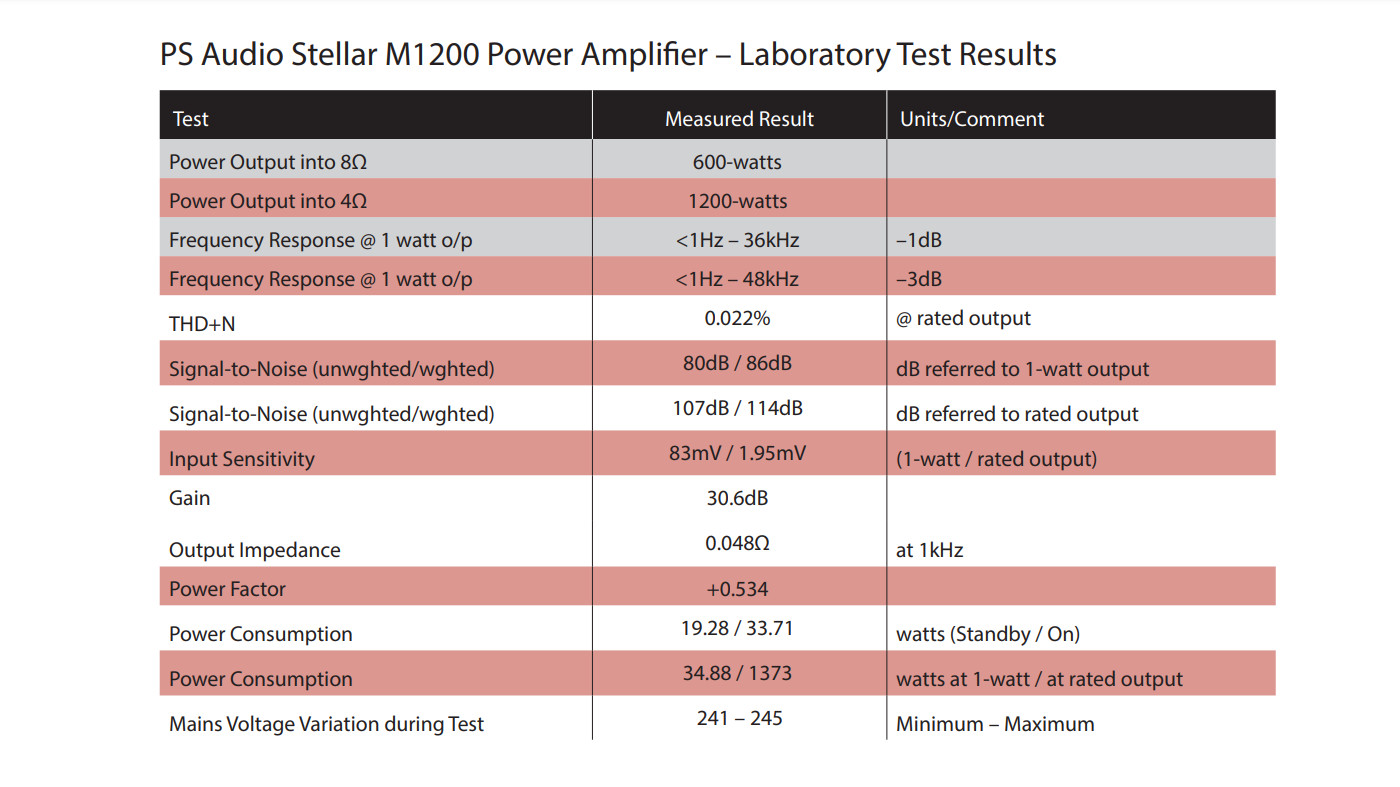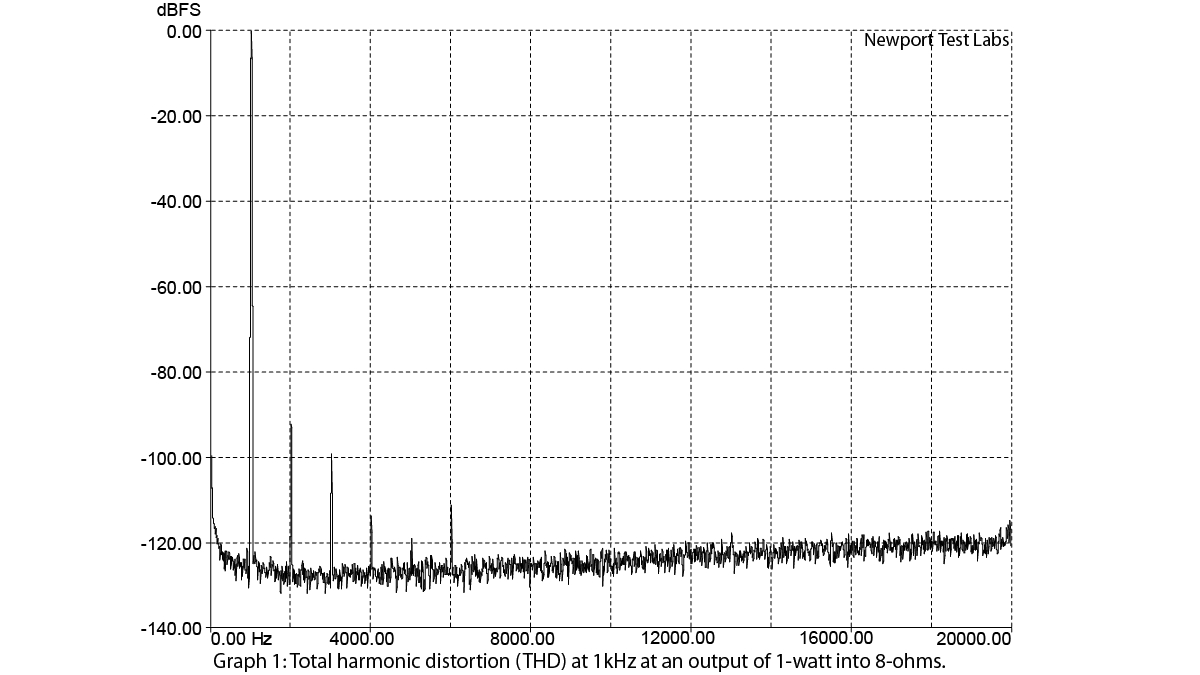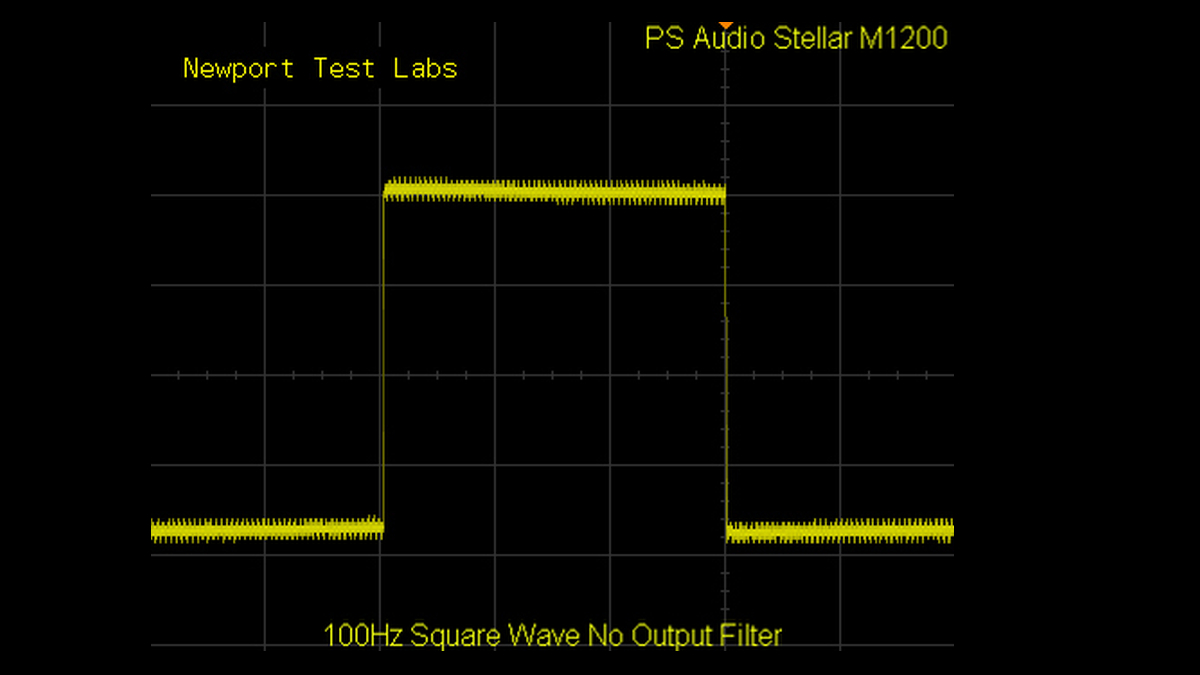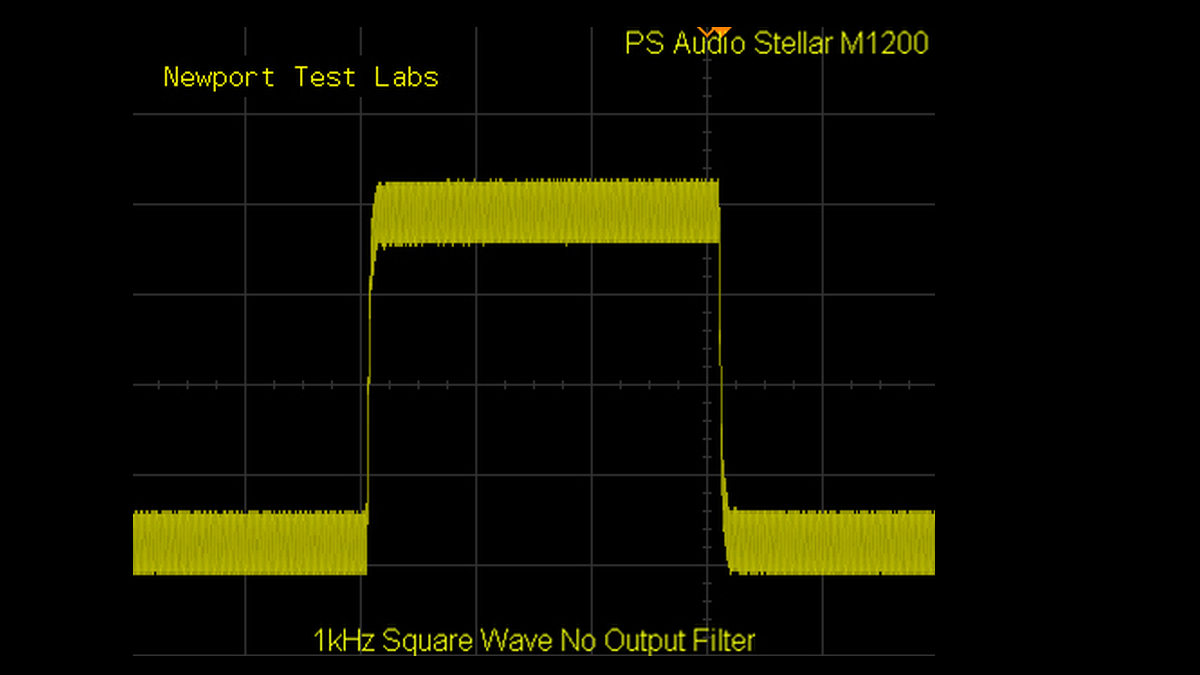What Hi-Fi? Verdict
The Stellar M1200 from PS Audio is a mono amplifier with a valve input stage, tremendous power, a gorgeous design and a sound quality to match its Stellar title. One of the only reasons to not consider this unit is if you simply don't need this much power.
Pros
- +
Incredible power
- +
Slim, attractive design
- +
Superb sound
Cons
- -
Bridged output
Why you can trust What Hi-Fi?

This review and test originally appeared in Australian Hi-Fi magazine, one of What Hi-Fi?’s sister titles from Down Under. Click here for more information about Australian Hi-Fi, including links to buy individual digital editions and details on how to subscribe.
I had a real fright when I first fired up PS Audio’s Stellar M1200s. After carefully noting the printed warning on the rear panel about not connecting the negative terminals to ground (more on this later in the review), I switched on the amplifier I was using to drive the left channel speaker only to have the front panel logo light up, then almost immediately extinguish. Mild panic. Had I accidentally shorted an output?
So I checked the wiring again. All good. So I tried switching it on again. Same thing. I am beginning to think that maybe this amplifier had a fault (it having come direct from a previous reviewer, rather than from the distributor). So I switched on the Stellar M1200 I was using to drive my right channel speaker, these being totally separate monoblock power amplifiers, after all.
Same deal – the front panel logo illuminated briefly then went totally black. Full-blown panic. Have I accidentally blown up both amplifiers?
It being a Saturday, the distributor is closed, so I decide I should probably read PS Audio’s Instruction Manual, only to find there is no section marked ‘Fault-finding’ as there usually is. So I started reading the manual from the very beginning.
It was only when I got to page 9 and discovered the section marked ‘Output Disable Mode’ that I heaved a sigh of relief. I hadn’t blown up the amplifiers at all. Both were likely in ‘Output Disable Mode’… whatever that was.
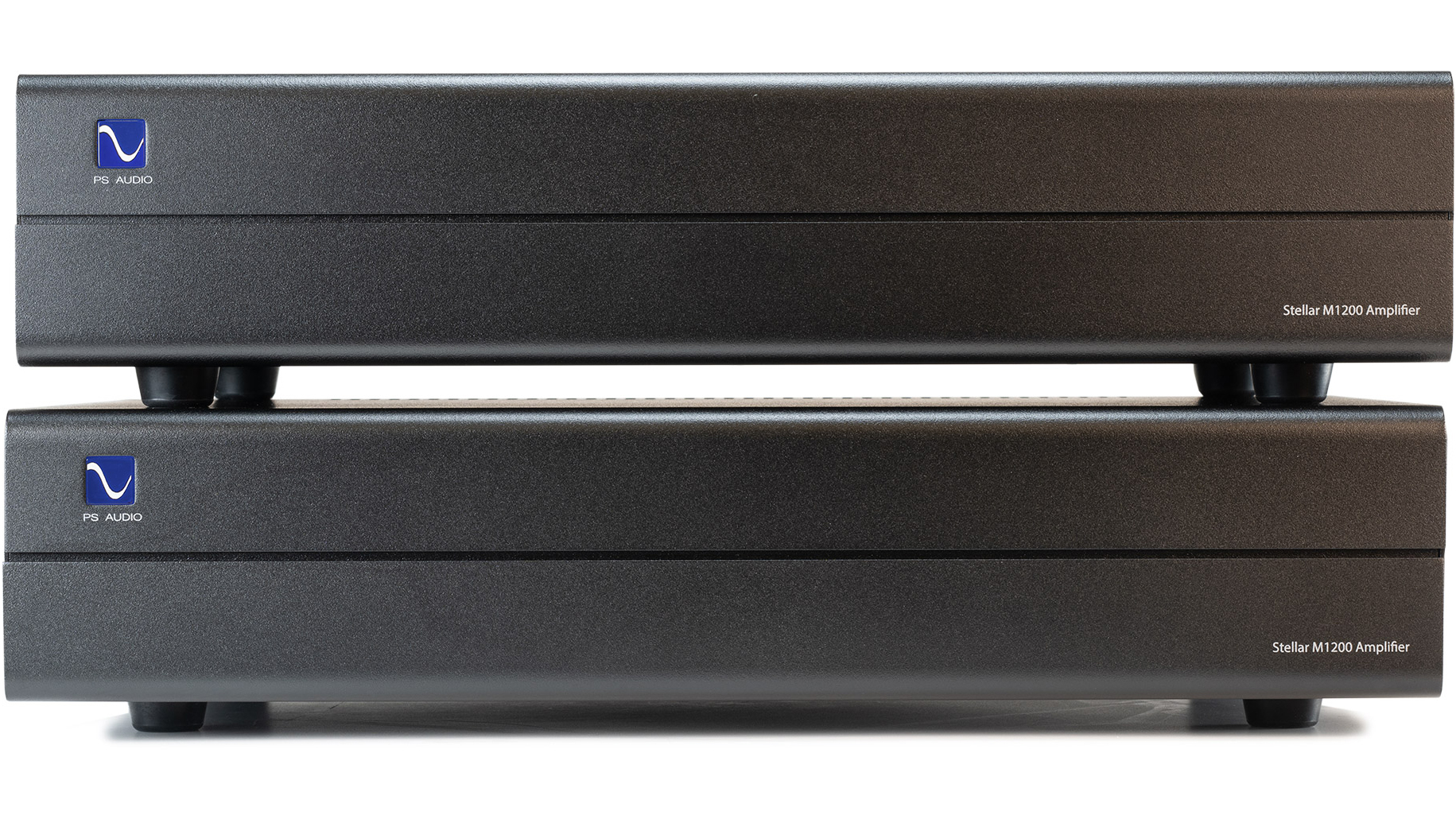
So what was this strange Output Disable Mode? I thought I’d better finish reading the manual before I tried turning the M1200s on again. Says the Manual: “This mode keeps the amplifier in reduced power mode, maintaining excellent performance benefits while increasing power economy.
"We recommend leaving the rear panel switch active at all times, and placing the unit in Output Disable Mode when finished listening. The vacuum tube is turned off during this mode and using this feature while not listening will dramatically increase the tubes [sic] lifespan.”
The latest hi-fi, home cinema and tech news, reviews, buying advice and deals, direct to your inbox.
Which only left the mystery of why the previous reviewer had apparently been listening to the M1200s in their ‘Output Disable Mode’ which would have meant they were operating at reduced power. And why wouldn’t the M1200s automatically switch back to primary operating mode whenever the mains power switch was switched off?
And if you’re wondering why I didn’t already know all this beforehand, it’s because I specifically make a point of not reading manufacturer’s blurbs or reviews of a product prior to writing my own review in order that I can’t be influenced by someone else’s opinion.
I was, for example, slightly influenced by something I was forced to read in PS Audio’s manual (because it was on page 6, before I got to the bit I wanted) which is that I should have been using PS Audio’s own PerfectWave mains power cables to connect the M1200s to my 240V mains sockets for this review because, says the manual, “It is always preferable to feed your equipment using an excellent power cable, as there will be a significant performance improvement over the stock power cable.”
If this is indeed the case, I think the onus should be on PS Audio to supply its best-quality cables with its products, rather than cables it thinks are inferior.
Equipment
A few moments later, I solved the ‘mystery’ of why the previous reviewer had left the amplifiers in ‘reduced power mode’ because it appears that what PS Audio calls a ‘reduced power mode’ is a particular mode that the rest of the world calls ‘Standby’. In other words, the previous reviewer had done no more than switch the amplifiers off before packing them.
So, when you power-up an M1200, the logo will flash briefly to indicate that mains power is available, after which it switches off and the amplifier goes direct into Standby mode.
If you then press the logo (which is actually a cunningly disguised push-button) that logo/button will flash blue/black for 30 seconds after which it will stay on to indicate the amplifier is completely operational and ready to go. I am more than just a little bit surprised that the Operating Manual does not point out this functionality right at the outset.
As it happens, this logo/pushbutton serves yet another purpose, which is to alert you if there is an internal fault that could result in damage to the amplifier. In this case, the Stellar M1200 goes into its ‘Fault Protect Mode’ during which the logo will flash blue/black for a few seconds and then go black totally, which means the amplifier has switched itself off completely.
According to PS Audio, this can occur if the fault sensor: “Detects a dangerous signal surge or transient that could damage the circuit” which it says can happen if the amplifier “is heavily overdriven.”
As you can see, there is very little to tell you about the front panel of the Stellar M1200, but what about the rear? Actually, there’s not much here either. There’s a primary power switch, which is mounted sideways possibly to circumvent the difficulty of vertical orientation, where audiophiles in North America expect that turning off the power will be accomplished by pressing the bottom of the switch, whereas audiophiles everywhere else in the world expect the exact opposite.
I say “possibly” because it’s more likely that it’s mounted sideways because the M1200 is not very high, so there’s not a lot of chassis space in this particular direction. Below this switch is a three-pin 240V socket.
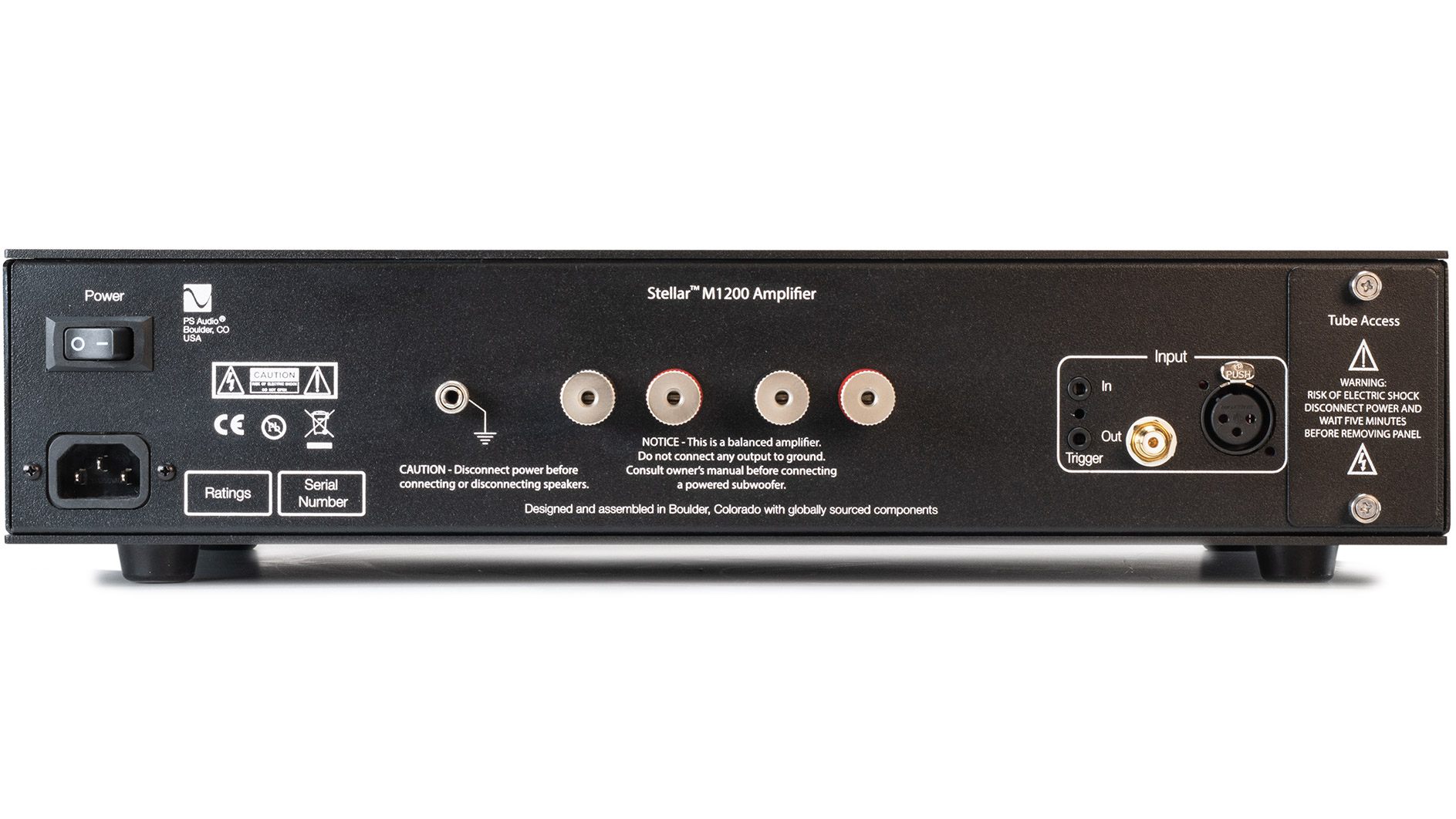
In the centre of the rear panel are four speaker terminals and a ground terminal. This last seemed rather strange to find on a power amplifier. Internally, the ground screw on both of my amplifiers was connected to nothing at all, so PS Audio is obviously depending on the chassis itself to be the conductor to the main earth point. I can only assume there was a good reason for this.
As for those speaker terminals, below them is a printed warning that says: “NOTICE – This is a balanced amplifier. Do not connect any output to ground. Consult owner’s manual before connecting a powered subwoofer.”
When I did exactly this, the manual told me: “It’s important to note that the Stellar M1200 is a fully balanced bridge tied load (BTL) amplifier. As with all BTL amplifiers, the black terminal is not ground. If connecting the Stellar to a REL Acoustics subwoofer it’s important to consult the manufacturer’s service documentation to ensure the Stellar is appropriate for the subwoofer. The ground lug on the rear of the amplifier can be used to ground the subwoofer in these applications.”
I doubt that REL is the only brand of powered subwoofer that would be affected by this warning, and it might also apply to active loudspeakers and electrostatic designs. Because of this, I personally would not recommend connecting anything other than passive loudspeakers to the M1200’s speaker terminals unless you have previously cleared it with PS Audio itself.
At the right of the rear panel are trigger inputs and outputs to enable remote switching, plus a single gold-plated RCA input and an XLR input while at the extreme right of the rear panel is a bolt-on plate that says “Tube Access. Warning: Risk of electric shock. Disconnect power and wait five minutes before removing panel.”
The ‘tube’, or ‘valve’, as I prefer to call them (but they are exactly the same thermionic device) concealed behind this removable plate is a medium-gain dual triode which in the case of my review sample was a 12AU7 (though it could easily have been an ECC82, which is the same valve.)
According to PS Audio, the reason they’ve included a valve in the Stellar M1200’s input stage is that: “Few [audiophiles] appreciate the power amp’s critical role in preserving music’s nuanced details because most amplifiers fail to preserve them. Overtones from plucked instruments, subtle cues defining placement, depth, soundstage width, and transient decays are often lost in the power amplifier.
"The M1200 loses nothing because of its vacuum tube input stage. In the M1200 a zero feedback Class-A vacuum tube input stage captures every whisper of music while preserving intact the most dynamic crescendos and quick rise time transients with zero loss. The listening experience with the M1200 is nothing short of a revelation.”
As for the Stellar M1200’s output stage, that is not made by PS Audio itself (which is the reason the back panel contains the phrase: Designed and assembled in Boulder, Colorado with globally-sourced components.) Inside the M1200 is an ICEpower1200AS Class-D module with integrated universal mains power supply that is designed and manufactured by Danish manufacturer ICEPower.
PS Audio says the ICEpower module it uses in the Stellar M1200 is ‘hand-modified’ using an ICEpower design team-approved process intended to take full advantage of the vacuum-tube input stage. PS Audio designer Darren Myers told Stereophile’s Michael Fremer: “This creates a simple, short and elegant signal path that conjoins the holographic and musical sound of triodes with the power, precision, and speed of top-tier switch-mode technology.”
Although PS Audio’s website says the M1200 has ‘a massive power supply’, the power supply is actually integrated into the ICEpower module and is a compact switch-mode design. Also, although the website also says the input stage is ‘fed from its own analog power supply’, its supply voltage is sourced not direct from the 240V mains at all, but from the ICEpower module’s switch-mode supply.
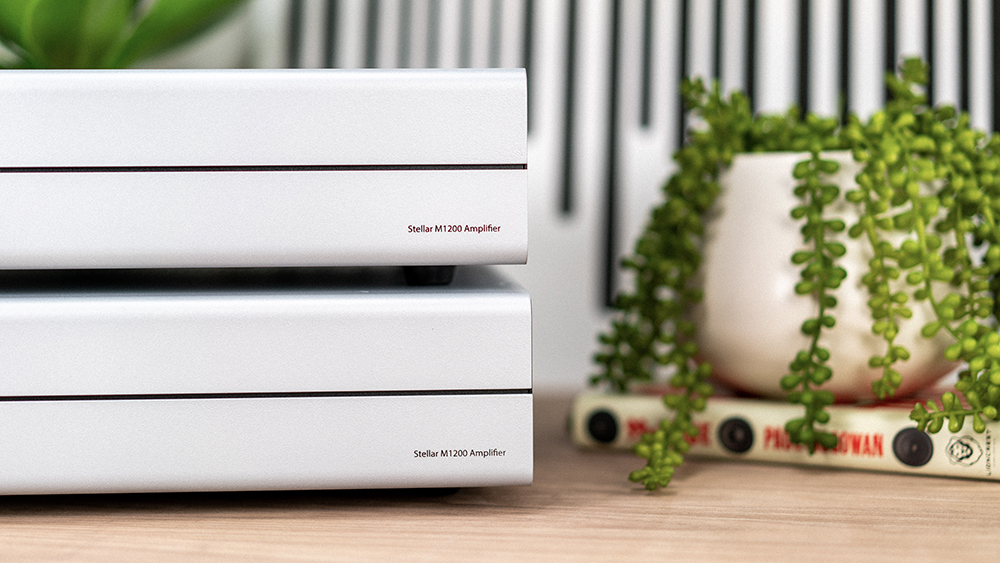
Listening sessions
Other than being careful not to accidentally short the speaker terminals or connect them to anything other than a passive loudspeaker, installing a pair of Stellar M1200s in your system will be easy.
Unlike linear mono power amplifiers, where it’s best to keep the two channels well-separated, to prevent magnetic interactions caused by the massive transformers inside them, it’s perfectly OK to position the PS Audio Stellar pair as a ‘stack’ and, due to their slim-line design and their attractive front panel cosmetics, they look great when so positioned.
Since I have mentioned linear amplifiers I should point out that PS Audio is quite unusual in that it has both conventional ‘linear’ Class-AB amplifiers and Class-D amplifiers in its current amplifier line-up. My understanding is that the company’s Class-AB amplifiers are built entirely in PS Audio’s factory in Boulder, Colorado and are designed either by Bascom H. King or Darren Myers. The ones designed by King are those with ‘BHK’ in the model name.
As well as suggesting you connect only passive loudspeakers to the Stellar M1200 I would further suggest that despite PS Audio’s specification that the Stellar M1200 design is ‘Stable for musical transients’ when driving 2Ω loads, that you should try to use speakers with a nominal impedance of 3Ω or more.
While there’s a lot of hyperbole on PS Audio’s website, I would certainly agree with one of the flowery statements it makes about the Stellar M1200, namely that it “combines the rich warmth and musicality of vacuum tubes with … jaw-dropping power and seemingly infinite headroom.”
The amount of power these amplifiers are able to deliver is so high that frankly, I find it a little frightening. With this pair in my system I think I would be locking away the key to my pre-amplifier’s volume control if I though there was even the vaguest possibility that someone might use my system without my knowledge.
And I really cannot think of any home hi-fi loudspeakers that could safely accommodate the full power this pair is able to deliver. And whereas most amplifiers will warn you about power limits by going into clipping at higher power levels, the Stellar M1200s’ output remains super-clean right up to 600-watts into 8Ω and 1,200-watts into 4Ω.
Of course the main reason for having all this power on tap is not so you can wind the volume up, but so that when you are listening at lower volume levels and a transient comes along that requires instantaneous power delivery far in excess of the average, the amplifier can deliver it instantly and cleanly. This is what dynamic range is all about, and this PS Audio pair has it in spades. There is absolutely no lag in power delivery, and no compression, just outrageously live-sounding dynamic sound.
What surprises most people is the amount of power you need to deliver transients cleanly when you are listening at low levels. It’s a lot! It’s generally called ‘headroom’. To give you an idea, let’s say you’re sitting three metres from your speakers, which are rated at 87dBSPL efficiency, and you’d like to listen at a level of 95dBSPL.
To ensure the absolute minimum amount of headroom required (3dB) your amplifier would need to be capable of delivering 113-watts continuous per channel. If you’d like a more comfortable 10dB of headroom, your amplifier would need to be capable of delivering 568-watts continuously.
The amount of amplifier power you need in even ordinary circumstances is so surprisingly high that UK designer Anthony Michaelson (Musical Fidelity) at one time manufactured and gave away cardboard slide-rule calculators to prove how much amplifier power was required (based on listening distance and loudspeaker efficiency) in order to listen at realistic loudness levels in your home.
But while it is essential to have adequate power, it is also essential that that power be clean, undistorted power and that it be unsullied by unwanted noise, whether than noise is mains hum or plain old circuit hiss. Here also the PS Audio Stellar M1200 design excels. In all my listening sessions I heard neither distortion nor noise from my speakers. The music delivered by these amplifiers was beautifully clean and totally musical.
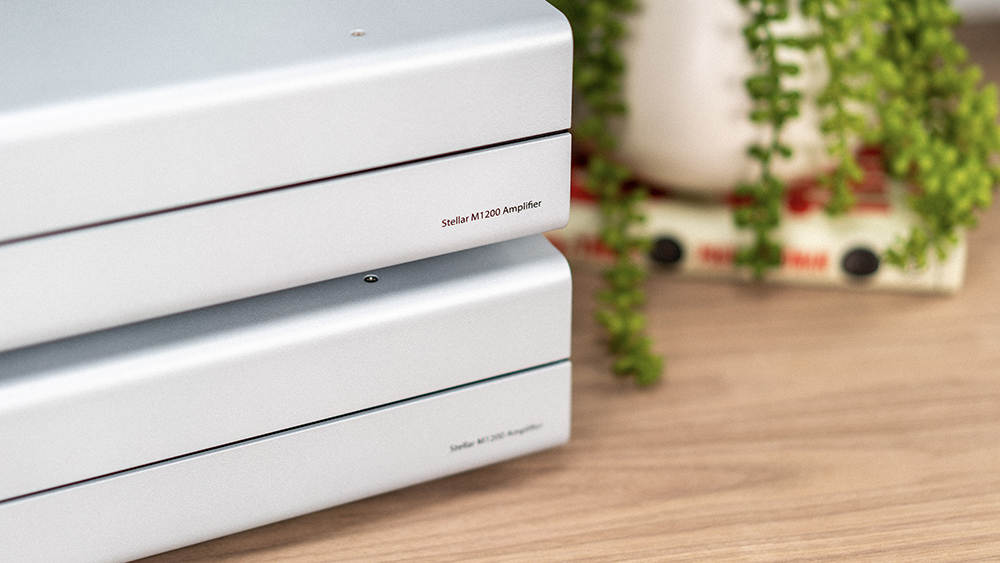
You can hear all of this, as well as discover a fabulous new album, by listening to the latest album (Mirror II) from Brisbane-based trio The Goon Sax. They’ve released good albums before, but this is the first one on a major label (Matador) and for mine it has the best sound quality yet.
This will be immediately apparent right from the opener In The Stone. The clarity of the strummed electrics is incredibly good, but if you think that sounds real, just wait until the bass enters. Wow! Ear-popping accuracy (and power!) from the PS Audio Stellar M1200s.
As for the sound of Louis Forster’s voice as he enters with “Do you think it’s better not feelin’/any of this at all”, it’s everything you’d want from an amplifier and more besides. Then when Riley Jones smacks into her kit, you will hear not only the true sound of wood on skin, but that she’s been practising like hell since she first came on board with the band. Her voice also has matured, as you’ll discover 51 in. Here delivered perfectly by the Stellar M1200s, it’s fragile and ephemeral, yet at the same time has a hidden power that is also revealed.
If you’re already a fan of the band, you will find much has changed about Goon Sax’s sound on Mirror II. Listen to Desire, for example, and you’ll hear echoes of electronica. It’s a beautifully dreamy yet epic composition that veers between fuzz and sheen yet alternates between a wall of noise and being almost total quiet. It’s really unlike anything they’ve done before, which I can’t say for Carpetry, which sounds totally familiar.
On Tag the trio takes a leaf from Billie Eilish’s playbook and introduces deliberately distorted sounds against a cluttered background of synths and also has Jones taking the lead vocal. Though I am not a huge fan of this particular track, I was full of admiration for the way the PS Audio Stellar M1200s were able to separate out the myriad disparate sounds that are crowded onto it. Many amps just blur the music into a colourless sonic blancmange.
If an amp can’t reproduce the sound of a piano, it’s not an amp, and the PS Audio Stellar M1200 proved itself to be one hell of an amplifier when it was/they were delivering the sound of all the pianos I auditioned.
I am particularly fond of listening to Joshua Kadison’s piano as he plays Jessie, from his debut album Painted Desert Serenade, and the sound of the M1200s made me even fonder of not only it, but also the mellifluous voice of Kadison himself. Listen also to the Hammond in the background, soaring ethereally into the stratosphere.
Considering this album also has the fantastic songs When a Woman Cries and Beautiful in my Eyes on it, it has to be one of the most under-rated albums ever. Gotta love Picture Postcards from LA too. What a great track! A delicious album from Josh and delicious sound from the Stellar M1200s.
The Stellar M1200s not only proved their piano credentials once again when I played Joni Mitchell’s The Last Time I Saw Richard, but also the purity of their delivery with one of the best (and best-known) voices in the business.
The Stellars handled the piano stabs marvellously well, and I marvelled also at the way they delivered the various different timbres of the sound of Mitchell’s breath-takes. Most amps can’t manage to differentiate them in this way. The string-ey sound of the lowest notes on the keyboard on this album are recorded perfectly, and the PS Audios more than did them justice.
Verdict
How much power do you need? If you need all the power that’s on tap from the Stellar M1200s, they may very well be the amplifiers for you. But if you’re not sure that you actually need all that much power, you should be looking at and auditioning their almost-identical twin(s), the Stellar M700 mono power amplifiers.
Although the differences in power output between the two designs in terms of “watts per channel” looks to be quite a bit on paper, in practical terms it’s a mere 2.3dB, and the sweetener is that the M700s retail for literally half the price of the M1200s. Sure you miss out on that valve input stage, but you do get PS Audio’s sweet Class-A MOSFET-based Analog Cell input stage instead.
But if you own very efficient speakers (around 90dBSPL) that, thanks to this high efficiency, will make optimum use of available amplifier power, PS Audio’s even lower-powered Stellar 300 should be on your radar. It’s on just the one chassis, rather than two, but internally it is dual mono, plus you still get the Analog Cell input stage and an ICEpower Class-D output stage. And the price? A snip at just AU$2,595.

Full lab test report
Measuring Class-D amplifiers is complicated by the amount of ultra-sonic noise that rides on the top of any low-frequency audio signal they are amplifying which, in the case of the M1200, was around 400mV.
You can’t hear this noise of course, it’s too high in frequency, and it’s also filtered out by the loudspeakers themselves, but it interferes with the circuitry of the test equipment. The limited bandwidth of Class-D amplifiers (typically 50kHz) also makes it impossible to establish typical marker points of performance such as the onset of clipping at high frequencies.
All of which makes it necessary to connect an external low-pass filter to the speaker terminals to remove that noise to allow accurate measurements. Newport Test Labs used both an external passive PrismSound dS-LPF passive low-pass filter and an active AES-17 filter for the great majority of the measurements.
Power output was measured only at 1kHz and Newport Test Labs measured it as coming in exactly on specification, at 600-watts into 8Ω, and 1,200-watts into 4Ω. These very high output levels will be maintained only for finite time periods, because the amplifier uses thermal sensing to automatically reduce power levels to ensure continuous operation. In typical home hi-fi situations, I would not expect these sensors to ever activate, meaning these power levels would be available at all times for all speakers with impedances of 2.7Ω or more.
Newport Test Labs measured the frequency response of the PS Audio Stellar M1200 as being 1dB down at 36kHz and 3dB down at 48kHz, with the low-frequency response extending to below 1Hz in both cases. This response is graphed in Graph 7 for both a standard resistive load (the black trace) and for a load that simulates the one that would be presented to the amplifier by a typical two-way bass-reflex loudspeaker.
As you can see, the two traces are almost perfectly overlaid, which means that the Stellar M1200’s frequency response will not be affected by the loudspeakers connected to its output, so you won’t get the variations in loudness caused by speaker/amplifier interaction that are typical with, say, valve amplifiers.
The performance shown in Graph 7 indicates an extremely low output impedance, and Newport Test Labs determined that this was indeed the case. At 1kHz it was 0.048Ω, a value that puts damping factor (DF) at an excellent 166.66.
Graph 1 shows distortion when the PS Audio Stellar M1200 is delivering one watt of power into 8Ω at a frequency of 1kHz. You can see that it’s spectacularly low and that there are just five harmonics, all low-order. The second harmonic component is at –93dB (0.00223%), the third is at –99dB (0.0011%), the fourth is at –112dB (0.00025%), the fifth at –118dB (0.00012%) and the sixth is at –110dB (0.00031%).
On this graph you can also see that the noise floor is more than 120dB down across most of the audio spectrum. The rising nature of the noise floor with increasing frequency is typical of all Class-D designs.
Graph 2 shows distortion when the PS Audio Stellar M1200 is delivering one watt of power at 1kHz into a 4Ω load, and you can see that although in real terms the performance is still excellent, with a limited number of distortion components, all of which are very low in level, there is a little more distortion with the lower-impedance load.
In this graph you can see that distortion components stretch out to the tenth harmonic, most of which are more than 100dB down (0.001%). The ones that aren’t are the second harmonic, at –88dB (0.00398%), the third, at –92dB (0.00251%), the fourth, at –83dB (0.00707%) and the eighth, at –97dB (0.00141%).
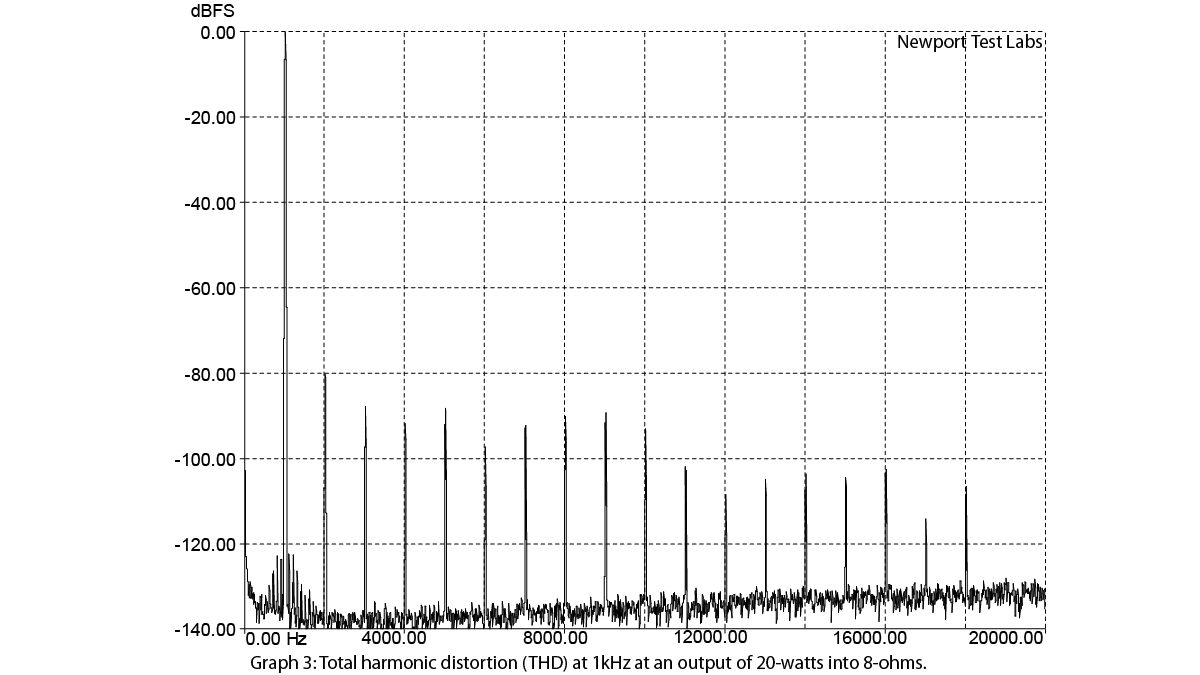
In Graph 3 Newport Test Labs has shown the PS Audio Stellar M1200’s output spectrum when output power at 1kHz is increased to 20-watts into an 8Ω load, which is effectively a ‘worst-case’ scenario for any power level (short of clipping). You can see both the number of distortion components and the levels have increased significantly.
Despite this, eight of the components are still more than 100dB down (0.001%), and five are more than 90dB down (0.00316%), leaving only the second harmonic at –80dB (0.01%), the third at –88dB (0.00398%), and the fifth at –89dB (0.00354%).
Although these are all so low as to be audibly insignificant, the second and third harmonics are ‘good-sounding’ due to being (musically speaking), the octave and the perfect fifth of the fundamental.

Graph 4 shows that at the higher power output level of 20-watts at 1kHz into a 4Ω load, the PS Audio Stellar M1200’s performance effectively reprised that of its performance at the lower power level into the same load. However once again, all except the second harmonic component are more than 90dB down, equivalent in percentage terms to 0.003% THD.
Intermodulation distortion with equal-level 19kHz and 20kHz test signals is shown in Graph 5. There are some high-frequency sidebands but the significant feature is the regenerated difference signal at 1kHz is at –72dB (0.02511%).
My guess is that this is due almost primarily to the use of a valve in the input stage. (Note that the noise floor above 20kHz is rolling off, rather than rising, because of the external filter(s) necessary to make this measurement.)
At the higher power level of 20-watts, CCIF-IMD increases, as shown in Graph 6. You can see two significant high-frequency sidebands at 18kHz and 19kHz that are around 75dB down (0.01778%) and that the 1kHz difference signal’s level is now at –65dB (0.05623%).
Newport Test Labs measured the signal-to-noise ratio, referred to an output of one-watt, as 80dB unweighted, improving to 86dB with A-weighting. Note however, that because of the use of a low-pass filter, noise higher than 20kHz was eliminated, which would not be the case when measuring a linear amp that did not require such a filter.
Signal-to-noise ratio referenced to rated output as measured by Newport Test Labs was 107dB unweighted, improving to 114dB with A-weighting. Again, the comment from the previous paragraph applies regarding the filter, but these two figures (which are the ratios of signal level to noise) are of course affected by the extremely high power output levels available from the Stellar M1200, which elevate the ‘signal level’ part of the ratio.
Newport Test Labs has included four oscillograms showing the PS Audio Stellar M1200’s performance with square waves, showing it with and without the external output filter.
The filtered 100Hz square wave (Square Wave 1) has a uniform shape with a very fast rise-time and a flat top that indicates no phase problems. (The overshoot on the leading edge is an artefact introduced by the low-pass filter, and should be ignored.)
The unfiltered 100Hz square wave shows the considerable effect of high-frequency noise on the signal, but if you ignore this, you can see that lying underneath is an excellently-shaped square wave, with good low-frequency extension and zero phase shift.
The filtered 1kHz square wave (SQW3) again shows that overshoot that’s introduced by the low-pass filter, but the top of the wave is otherwise perfectly flat, as it should be. You can see that the leading edge of the square wave is moved away from the vertical as it rises, showing the upper frequency response limitations of the amplifier, as previously noted (–1dB at 36kHz and –3dB at 48kHz).
Unfiltered, the 1kHz square wave (SQW4) is again contaminated by the presence of high-frequency noise. However I note again that although it’s certainly visible (and measurable) it is definitely not audible, firstly because it will be filtered out by your speakers and secondly because at up around 470kHz, even if your speakers were able to reproduce it, it is ‘way too high in frequency for any human to be able to hear. Indeed, even if you (literally) had the ultrasonic hearing ability of a bat you’d not be able to hear it, as a bat’s echo-location upper frequency is around 200kHz.
Input sensitivity was such that only 83mV will be required at the input to deliver 1-watt at the Stellar M1200’s output, so you will be able to drive it with any category of device at all. To deliver its rated output, you will need to apply 1.95V to the M1200’s input. Any active pre-amplifier on the planet will be easily able to do this. These test results put gain at 30.6dB, which is right on specification.
Standby power consumption is rather higher than I might have expected, at a bit under 20-watts, so this is not an amplifier I would leave on when I was not using it. I would recommend turning it off whenever you’re not using it. The valve will come up to temperature very quickly (it has an inbuilt heater, after all!) and the Class-D output stage requires only minutes to stabilise.
Overall, Newport Test Labs’ measurements prove that the PS Audio Stellar M1200 is an extremely high-powered, well-designed and well-engineered hybrid Class-D power amplifier.
Australian Hi-Fi is one of What Hi-Fi?’s sister titles from Down Under and Australia’s longest-running and most successful hi-fi magazines, having been in continuous publication since 1969. Now edited by What Hi-Fi?'s Becky Roberts, every issue is packed with authoritative reviews of hi-fi equipment ranging from portables to state-of-the-art audiophile systems (and everything in between), information on new product launches, and ‘how-to’ articles to help you get the best quality sound for your home.
Click here for more information about Australian Hi-Fi, including links to buy individual digital editions and details on how best to subscribe.

